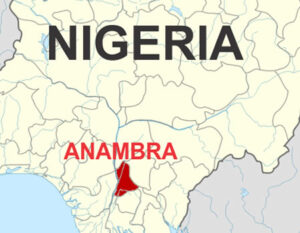CBN orders banks to stop putting old notes in their ATM
[ad_1]
Amidst complaints in some quarters following the scarcity of the redesigned Naira notes, the Central Bank of Nigeria (CBN) has promised to monitor commercial banks to ensure they comply with the directive of loading the new Naira notes in their Automated Teller Machines (ATMs).
This was made known by the CBN Director of Currency Operations, Ahmed Umar at the training session for State Directors of National Orientation Agency (NOA) on the redesign of currency notes policy in Abuja.
Umar said the CBN’s directive was to implement the January 31 deadline withdrawal of old naira notes in circulation.
He said, “We want to use this training session to pass the message that the CBN has enough currency notes to go round the general public.
“We, the CBN management, have mandated banks to stop putting old notes in their ATM machines. They should only put the new notes.
“And there is serialisation of the policy that they can put either N500, N1000 or N200 notes, which ever denomination they have or combination of any of those notes; they should just put a new note in their machines.
ALSO READ: Naira redesign: CBN, NOA partner to sensitise grassroots on acceptability
“We are going to monitor to ensure that the banks comply, and if they don’t, we have penalty for non-compliance.”
Umar stated that it takes a few years before many countries redesign their currency notes, adding, “in our own case what we had was basically over 20 years of having the same design of notes.
“Over that period, what it did to us was to create avenue for some people to master the act of counterfeiting the note.
“In our own case, what we have is a minimum of 17 years or more for us to redesign our currency.
“If you notice the N1000 note that was introduced in 2005, it took 17 years for us to redesign it. N500 and N200 notes were also redesigned after 21 years and 22 years respectively.
“So, if currency notes stay too long in the system, there is the tendency that people who are involved in counterfeiting make a lot of efforts to produce the same notes. So, that is why there is need to change our notes regularly.
“Another reason is that N500 and N1000 constitute 99 percent of the currency notes that are being targeted for counterfeiting. It is simple logic, the effort you put to counterfeit N1000 is the same effort you put to counterfeit N5.
“So, why will they waste their energy doing small note; they always target the higher note particularly N1000 because of values attach to it”.
The NOA Director-General, Dr Garba Abari, also stated at the event that the agency partnered with the CBN to educate NOA members of staff at 774 local government areas to assist in enlightening Nigerians on the redesign of the new banknote policy.
He expressed hope that the training would go a long way in addressing misconceptions and misunderstanding around the new currency notes policy.
Abari, therefore, called on all participants to pay serious attention to the training in order to represent CBN well while embarking on enlightenment programmes at the grassroots.
[ad_2]













Post Comment